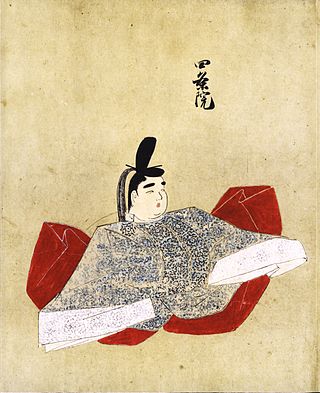Emperor Shijō
Emperor of Japan from 1232 to 1242 From Wikipedia, the free encyclopedia
Emperor Shijō (四条天皇, Shijō-tennō) (17 March 1231 – 10 February 1242) was the 87th emperor of Japan, according to the traditional order of succession. This reign spanned the years 1232 through 1242.[1]
| Emperor Shijō 四条天皇 | |||||
|---|---|---|---|---|---|
 Shijō, Tenshi Sekkan Miei | |||||
| Emperor of Japan | |||||
| Reign | 17 November 1232 – 10 February 1242 | ||||
| Enthronement | 16 January 1233 | ||||
| Predecessor | Go-Horikawa | ||||
| Successor | Go-Saga | ||||
| Shōgun | Kujō Yoritsune | ||||
| Born | 17 March 1231 | ||||
| Died | 10 February 1242 (aged 10) | ||||
| Burial | Tsukinowa no Misasagi (月輪陵) (Kyoto) | ||||
| |||||
| House | Imperial House of Japan | ||||
| Father | Emperor Go-Horikawa | ||||
| Mother | Kujō Shunshi | ||||
Genealogy
Before his ascension to the Chrysanthemum Throne, his personal name (his imina) was Mitsuhito-shinnō (秀仁親王),[2] also known as Tosihito-shinnō.[3]
He was the first son of Emperor Go-Horikawa.[4]
Consort: Kujō Genshi (九条 彦子; 1227–1262) later Nishinomon’in (宣仁門院), Kujō Norizane’s daughter
He had no children, due to his youth at the time of his death.
Events of Shijō's life
Summarize
Perspective
He reigned from 26 October 1232, to 10 February 1242.
- 17 November 1232 (Jōei 1, 4th day of the 10th month): In the 11th year of Emperor Go-Horikawa's reign (後堀河天皇十一年), he abdicated; and the succession (senso) was received by his oldest son. Shortly thereafter, Emperor Shijō is said to have acceded to the throne (sokui).[5]
Emperor Shijō died from an accident in 1242. His Imperial tomb (misasagi) is at Sennyū-ji in the Nochi no Tsukinowa no Higashiyama no misasagi (後月輪東山陵).[6]
As the Emperor was very young, and the Retired Emperor Go-Horikawa died just two years later, most of the actual leadership was held by his maternal relatives Kujō Michiie and Saionji Kintsune.
Kugyō
Kugyō (公卿) is a collective term for the very few most powerful men attached to the court of the Emperor of Japan in pre-Meiji eras. Even during those years in which the court's actual influence outside the palace walls was minimal, the hierarchic organization persisted.
In general, this elite group included only three to four men at a time. These were hereditary courtiers whose experience and background would have brought them to the pinnacle of a life's career. During Shijō's reign, this apex of the Daijō-kan included:
- Sesshō, Kujō Norizane, 1231–1232
- Sesshō, Kujō Norizane, 1232–1235
- Sesshō, Kujō Michiie, 1235–1237
- Sesshō, Konoe Kanetsune, 1237–1242
- Sadaijin
- Udaijin
- Nadaijin
- Dainagon
Eras of Shijō's reign
The years of Shijō's reign are more specifically identified by more than one era name or nengō.[7]
See also
Notes
References
Wikiwand - on
Seamless Wikipedia browsing. On steroids.
